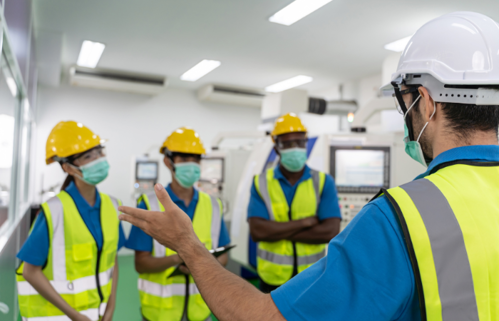


In the heart of Australia's bustling construction sector lies a paramount commitment to ensuring the health and safety of every individual on site. As the industry faces inherent risks, the emphasis on creating a secure work environment has never been more critical. The Work Health and Safety Act 2011 stands as a testament to Australia's dedication to upholding the highest standards of workplace safety, setting a legislative framework that safeguards workers while promoting a culture of continuous safety improvement. This guide aims to navigate through the intricacies of this legislation, offering insights into the collective responsibilities of employers and workers in fostering a safe and compliant construction environment.
The Work Health and Safety Act 2011 (WHS Act) is a comprehensive piece of legislation designed to provide a framework for managing workplace health and safety in Australia. It aims to protect workers and other persons against harm to their health, safety, and welfare through the elimination or minimization of risks arising from work. Central to this act is the principle of 'duty of care,' requiring employers, employees, manufacturers, and others to uphold high safety standards in their practices and operations, fostering a safe working environment for all involved.
Under the WHS Act, employers in the construction industry have a significant obligation to ensure the health and safety of their workforce. This responsibility extends to providing a safe work environment, ensuring that all machinery and equipment are maintained in a safe condition, and that workers are properly trained and informed about workplace hazards. Employers must also implement risk management processes to identify potential hazards, assess risks, and apply effective control measures to prevent accidents and injuries on construction sites.
Workers in the construction sector are entitled to a safe working environment, where risks are properly managed and minimized. They have the right to receive training on health and safety issues, to be provided with necessary personal protective equipment, and to raise concerns about workplace safety without fear of discrimination or retaliation. Conversely, workers have the duty to follow safety procedures and instructions, to use safety equipment correctly, and to report any hazardous situations or near misses to their employers, contributing to a culture of safety and vigilance.
The construction industry is inherently risky, with workers facing numerous health and safety hazards ranging from falls from heights, being struck by moving objects, to exposure to dangerous substances. It's crucial for both employers and workers to recognize these risks and take proactive measures to mitigate them. This includes implementing safety protocols for working at heights, ensuring machinery is operated safely, and providing adequate training and protective gear to handle hazardous materials. By identifying and addressing these risks, the construction industry can work towards minimizing the occurrence of workplace accidents and injuries..
In the Australian construction industry, implementing Safety Management Systems (SMS) is crucial. An effective SMS integrates safety assessments in every project phase, from design to execution, ensuring that safety practices are proactive rather than reactive. It involves identifying potential hazards, conducting risk assessments, and establishing control measures to mitigate risks, tailored to the unique challenges of construction sites.
The construction sector requires specific training and competency for workers to safely navigate its myriad risks. In Australia, this means not only initial training but continuous education on the latest safety standards and practices. Workers engaged in high-risk activities, such as operating heavy machinery or working at heights, need targeted training to perform these tasks safely, ensuring compliance with national standards.
Prompt and efficient incident reporting and response are pivotal in the construction industry. Australian regulations mandate the reporting of all safety incidents and near misses, facilitating a swift response to mitigate hazards and prevent future occurrences. This process is integral to maintaining a safe work environment, allowing for the continuous improvement of safety practices.
The dynamic nature of construction work necessitates a commitment to continuous improvement and compliance with safety legislation. In Australia, this involves regular safety audits, staying abreast of legislative changes, and adapting safety protocols to reflect best practices and technological advancements. This continuous cycle of evaluation and improvement helps construction firms not only comply with current laws but foster a culture of safety excellence.
These components are fundamental to fostering a safe, compliant, and efficient construction industry in Australia, emphasizing the collective responsibility of employers and workers to uphold high safety standards.
In the dynamic and ever-evolving construction industry of Australia, adherence to the Work Health and Safety Act 2011 remains paramount for safeguarding the well-being of all stakeholders involved. By embracing rigorous safety management systems, committing to continuous training and competency development, and fostering a culture of prompt incident reporting and responsiveness, the construction sector can achieve exemplary safety standards. Moreover, the pursuit of continuous improvement and strict compliance underscores the industry's dedication to not just meeting but exceeding safety expectations. For further resources and guidance on complying with the WHS Act and enhancing workplace safety, industry professionals are encouraged to consult the Safe Work Australia website and the relevant state or territory safety regulator. Together, we can build a safer, more secure future for Australia's construction industry.